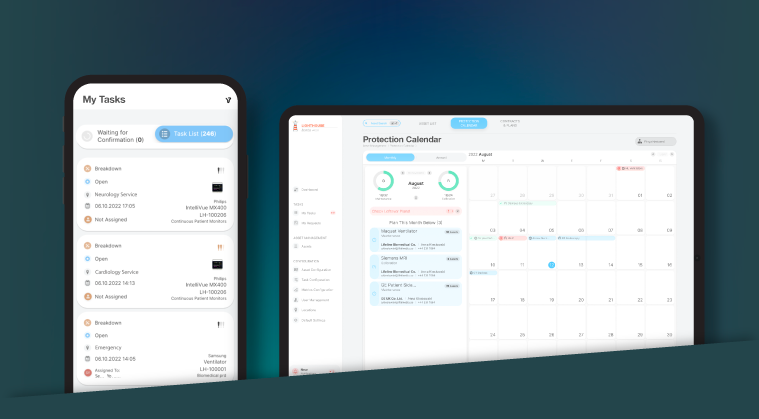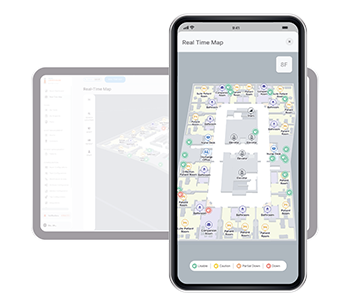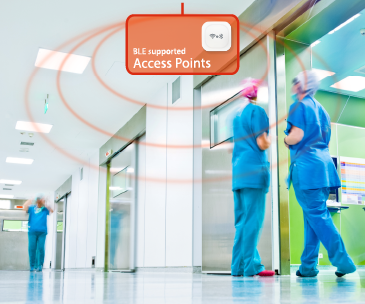
Optimizing the Pre-operation Room Process via RTLS in Hospitals
Optimizing the Pre-operation Room Process via RTLS in Hospitals
In the fast-paced world of modern medicine, optimizing the operation process is crucial for both patient satisfaction and overall healthcare outcomes. While many aspects of the surgical journey receive attention, one area that holds immense significance, but often goes unnoticed, is the waiting time in the pre-operation room. “Pre-Operation time” refers to the duration when the patient is in the final stages of preparation for the surgical procedure before the operation, and it begins when the patient is taken to the preoperative room from the service room. This process involves identifying any potential risks, optimizing the patient’s health status and getting them ready for surgery. Recognizing the significance of this crucial process and leveraging real-time location system (RTLS) technology can revolutionize the way hospitals approach patient care, ultimately leading to improved outcomes and greater operational effectiveness.
In this article, we will highlight the significance of regulating the pre-operation time in achieving optimal operation outcomes and how it can positively affect patient satisfaction and overall operating room efficiency.
The pre-operation room represents a crucial phase in a patient’s surgical journey. During this time, patients undergo essential preparatory procedures, such as pre-operative assessments, vital sign monitoring and anesthesia administration. However, the waiting time in the pre-operation room can often be associated with anxiety, uncertainty and discomfort for patients. Pre-operation time should be neither too long nor too short, ideally not exceeding an average of 30 minutes.
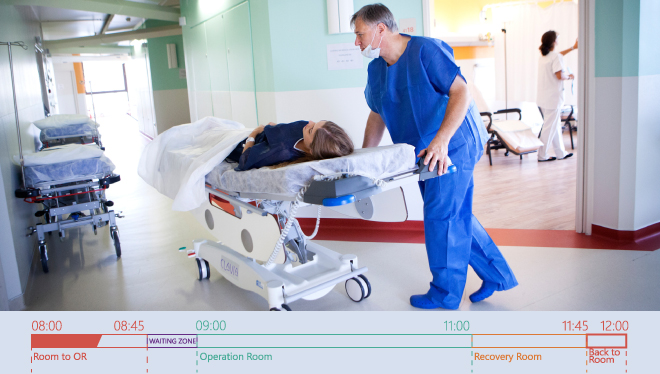
What happens if pre-operation time is prolonged?
- Patients’ checklists may need to be repeated, potentially resulting in the delay of the surgery or, in the worst case, cancellation of the surgery.
- The risk of complications due to the patient’s extended stay may also result in delay or cancellation of the surgery.
- Due to the inability to ensure order during the starting hours of the operation and the pre-operation times, the patients may be taken to the pre-operation room one after another. As a result, the patients share the same area with others for a long time, which could cause stress.
- Patient satisfaction may decrease due to prolonged hospital stays.
Hospital RTLS utilizes a network of sensors, tags and receivers to track the real-time location and movement of patients, staff and assets within a healthcare facility. By deploying this innovative system in the pre-operation room, hospitals can achieve a range of benefits that positively impact both patients and healthcare providers. Addressing these challenges through the implementation of RTLS technology in hospitals can significantly enhance the quality of care provided.
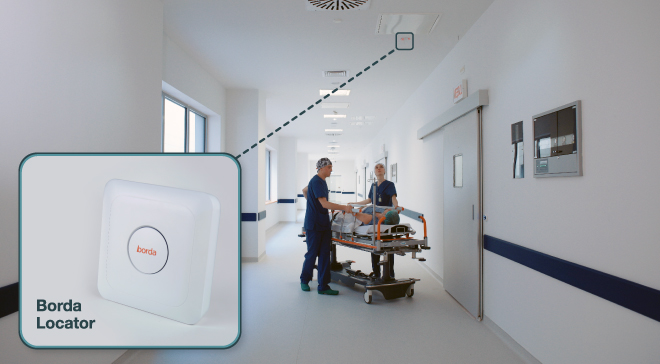
Proper regulation of the operation process requires the establishment of effective communication channels, such as screens, notifications and information-sharing protocols. With RTLS patient tracking; surgeons, nurses, anesthesiologists and support staff can track the progress and location of patients, ensuring seamless transitions from the pre-operation room to the operating theater. Instant visual dashboards facilitate communication between teams, such as those in the service and operating room departments. Using the operating room density map, a surgical schedule can be created based on the density of operating rooms throughout the day, along with their start and end times. This enhanced visibility reduces confusion, prevents delays, and optimizes the scheduling of surgeries, ultimately leading to improved operational efficiency.
Furthermore, hospital RTLS technology enables accurate tracking of assets required in the pre-operation room. By tagging essential assets and devices, healthcare providers can easily locate and access them when needed, minimizing the time spent searching for necessary resources. This efficient RTLS asset tracking capability reduces delays, ensures that everything is readily available, and contributes to a smoother pre-operation process.
As a result of the follow-up of all phases of the surgical processes and the examination of the reports with the methods mentioned above, one of the “operationally aware” hospitals, with 500 beds and 15 operating rooms and an average of 1,300 patients annually having surgery, has reduced their pre-operation time by 25%. In another hospital, with 1,000 beds and 30 operating rooms, the pre-operation time has been reduced by 46%. This significant improvement positively impacts patient satisfaction and hospital efficiency.
The significance of waiting time in the pre-operation room cannot be understated. A well-designed and properly implemented ‘’IoT for Healthcare’’ solution can truly revolutionize the operation process, ensuring that waiting time in the pre-operative room is minimized, patient experiences are optimized, and healthcare providers can deliver the highest standard of care.


